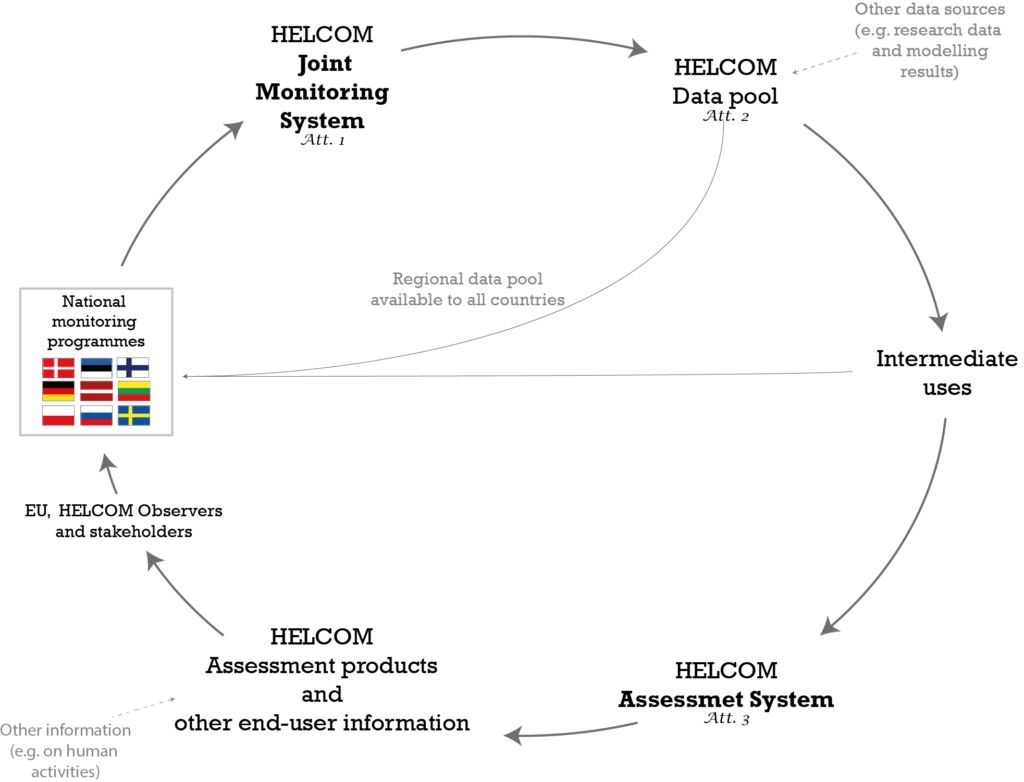Monitoring and Assessment Strategy
HELCOM Monitoring and Assessment Strategy
HELCOM work on monitoring and assessment is based on a Strategy that was adopted by the HELCOM Ministerial Meeting in 2013.
The Strategy is a common plan to monitor and assess the health of the Baltic Sea in a coordinated and cost-efficient way between all HELCOM Contracting Parties.
The overall objectives of the HELCOM Monitoring and Assessment Strategy are to:
- lay out a system which enables showing how visions, goals and objectives set for the Baltic Sea marine environment are being met;
- provide a system that enables linking the quality of the environment to its management;
- facilitate the implementation of the ecosystem approach covering the whole Baltic Sea, including coastal and open waters;
- enable the provision of data and information that links pressures on land, from the atmosphere, in coastal areas and at sea to their impacts on the marine environment (Attachment 2, Data and Information Strategy);
- describe the system for coordination of monitoring activities for Baltic Sea specific issues of concern;
- set out the structure and time frame for the production of region-specific assessments such as comprehensive thematic and holistic assessments and more concise and more timely indicator reports and other assessment products;
- create a system which enables raising also general public awareness of the Baltic Sea and HELCOM actions.
- design a system for producing targeted assessment products for region-specific management purposes by also making use of data and information produced by Contracting Parties for other fora
The general principles of the Strategy that relate to coordinated monitoring have been translated into concrete specifications and requirements through the HELCOM Monitoring Manual.
Principles of the HELCOM Monitoring and Assessment Strategy: National monitoring programmes use the principles of the Joint Monitoring System to achieve a high degree of coordination, cooperation, sharing and harmonization. The Joint Monitoring System feeds a Data Pool that is the basis for the Assessment System. This system produces assessments of the health of the Baltic Sea that can be used by HELCOM countries as well as EU, observers, stakeholders, etc.
Co-operation
HELCOM State and Conservation works together with several international organizations to deliver and store monitoring data and information, including the Co-operative Programme for the Monitoring and Evaluation of Long-range Transmission of Air Pollutants in Europe (CLRTAP/EMEP), the International Council for the Exploration of the Sea (ICES), the European Environmental Agency (EEA), and the International Atomic Energy Agency (IAEA).

